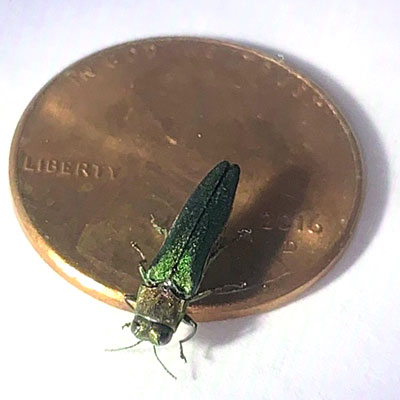An Insect We Will Know Too Well
Emerald ash borers came into the United States 20 years ago. First observed in Southeastern Michigan in 2002 they’ve now been identified in 35 states (including Texas) and credited with killing millions of ash trees in the process.

What you need to know…
• All species of ash (genus Fraxinus) are susceptible.
• The borers attack both healthy and weakened trees.
• Once attacked, an ash tree will die, usually within 2-3 years.
• The adult beetles lay their eggs in the bark of ash trees in late summer.
• Larvae burrow into the bark, then feed beneath the bark in the phloem and cambium.
• They disrupt the flow of water and nutrients within the trunk.
• The top branches die and become visible. The roots die because they’re not getting nourishment. Then the tree dies.
• The beetles spread within nature at their own pace, but we greatly speed things along when we transport firewood or nursery stock that is contaminated from an area known to be infested to a region heretofore free of the pest.
• For that reason, the Texas A&M Forest Service puts out hundreds of Emerald ash borer traps each year to monitor their movement. Quarantines are initiated when necessary. Stay current on how they apply in your area and honor their rules.
Here is the latest information from the Texas A&M Forest Service. This explains the situation in excellent detail.
